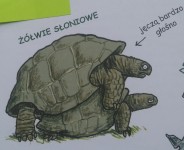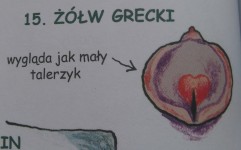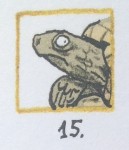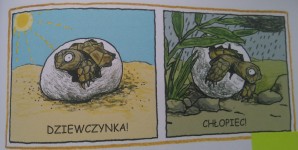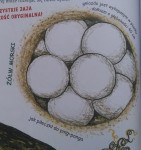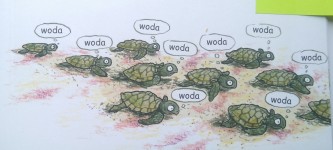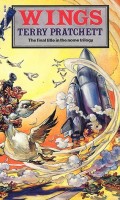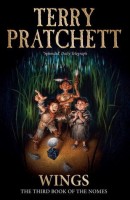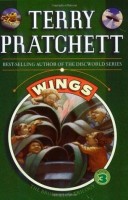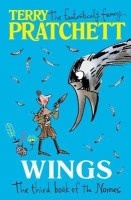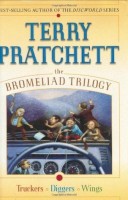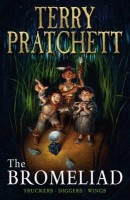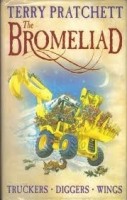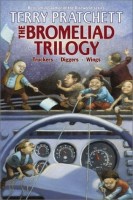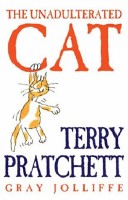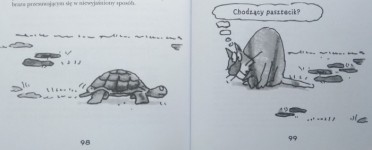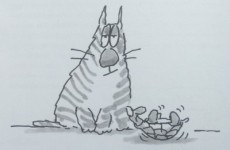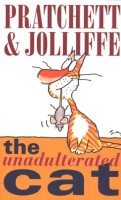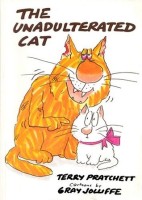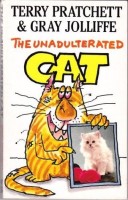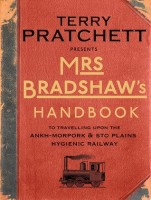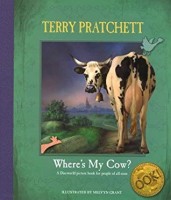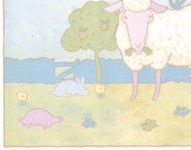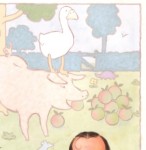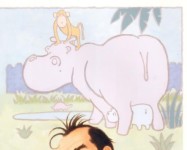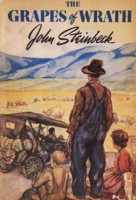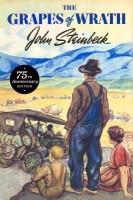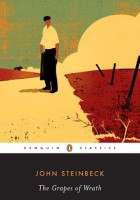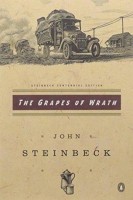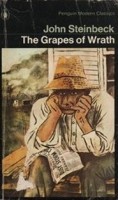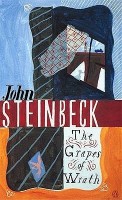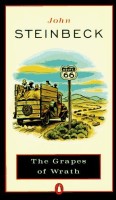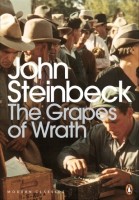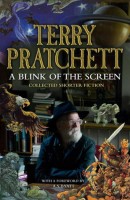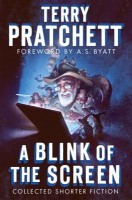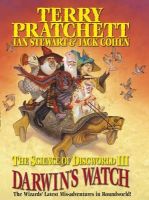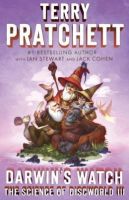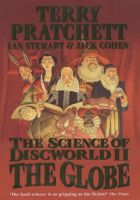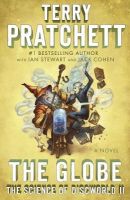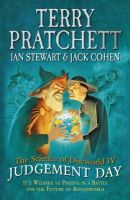 Title: The Science of Discworld IV – Judgement Day
Title: The Science of Discworld IV – Judgement Day
Author(s): Terry Pratchett, Ian Stewart, Jack Cohen
Release year: 2013
Publisher: Ebury Press
Why in Database:This is the fourth and final volume of a four-book series. Again, these books can definitely be called popular science, with the addition of Discworld. The chapters are arranged in turns, one about the magicians from the unseen university (generally shorter) and one about science in a broad sense, in the fourth volume they are issues concerning broadly understood human beliefs. As this book balances between the real world and the disc, there are many (in both perspectives) references to turtles, (the turtle also got a cover in the form of a pendant), there are also a lot of fragments about terrestrial “World’s turtles“. The Turtles also got to the names of two chapters, the fourth (World Turtles) and the twenty-first (The Turtle Moves!).
The first quote is about the interesting difference between the globe world and the discworld:
Roundworld has no supports. It appears to think it’s a turtle, because it swims through space, tugged along by those mysterious forces. Its human inhabitants are not bothered by a sphere that swims, despite the absence of flippers.
The next fragment also explains the discworld’s approach to the sphere world:
The Discworld series takes Roundworld mythology seriously, to humorous effect; nowhere more so than in its basic geography and its magical supports – elephants and turtle.
The next five fragment are about the importance of turtles in the (our) world’s cosmological myths:
All well and good, but both universe-centred science and human-centred myth-making can hardly fail to ask a supplementary question: What keeps the elephants up? If the idea of an ordinary elephant hovering in mid-air is ludicrous, how much more so is that of a vast, extraordinarily heavy elephant doing the same? Discworld’s answer is A’Tuin, a giant space-faring turtle. The turtle’s shell provides a firm place for the elephants to stand. As a cosmology, it all hangs together pretty well … but of course a further question arises: What keeps the turtle up? It might seem that we could go on like this indefinitely, but at this point observations of nature come into play. The natural world provides a long list of exceptions to the belief that the natural place of any object is on the ground: celestial bodies, clouds, birds, insects and all water-borne creatures – fish, crocodiles, hippos, whales and, crucially, turtles.
(…)
Which leaves turtles.
Small turtles spend a lot of time on rocks, but no one in their right mind would expect a small turtle to hold up four giant world-bearing elephants. Big turtles come out onto land to lay their eggs, but that’s a mystical event and it doesn’t cast serious doubt on the theory that a turtle’s natural place is in water. Where, please notice, it does not require support. It can swim. So it stands to reason that any self-respecting giant space-faring turtle will swim through space, which implies that it needs no artificial support to avoid falling. Examining the animal more closely, a world-spanning turtle seems ideal as a support for giant elephants. It is hard to imagine what could perform the task better. In short, Discworld is, as stated earlier, the sensible way to make a world.
So it’s worth examining the similarities and differences between the creation stories of different cultures – especially when it comes to world-bearing elephants and space-faring turtles. Along with a third common world-bearing creature, the giant snake. The world turtle (cosmic turtle, divine turtle, world-bearing turtle) can be found in the myths of the Chinese, Hindus and various tribes of native North Americans, in particular the Lenape (or Delaware Indians) and the Iroquois.
Around 1680 Jasper Danckaerts, a member of a Protestant sect known as Labadists, travelled to America to found a community, and he recorded a Lenape myth of a world turtle in Journal Of A Voyage To New York In 1679-80. We paraphrase the story from a 1974 article by Jay Miller.fn2 At first, all was water. Then the Great Turtle emerged, mud on its back became the Earth, and a great tree grew. As it rose skywards, one twig became a man; then it bent to touch the Earth and another twig became a woman. All humans descended from these two. Miller adds: ‘my … conversations with the Delaware indicate that life and the Earth would have been impossible without the turtle supporting the world.’
Finally Little Toad brought up mud, which was spread on the back of Big Turtle. The mud grew until it turned into North America. Then the woman gave birth. One son, Sapling, was kind, and filled the world with all good things; the other, Flint, ruined much of his brother ’s work and created everything evil. The two fought, and eventually Flint was banished to live as a volcano on Big Turtle’s back. His anger can still sometimes be felt when the Earth shakes.
(…)
The world-bearing turtle never made it into the Egyptian pantheon, but it was common in ancient central America, among cultures such as the Olmecs. To many of these cultures, the world was both square and round, and it was also a caiman or turtle floating on a primordial sea, which represented the Earth and might or might not carry it.
(…)
In another central American culture, the Maya civilisation, thirteen creator gods constructed humanity from maize dough. The world was carried at its four cardinal points by four bacabs, elderly deities of the earth’s interior and waters, shown carrying a sky-dragon in early depictions but later believed to be drowned ancestors. Their names were Cantzicnal, Hobnil, Hosanek and Saccimi, and each ruled one of the four directions.fn3 They were closely associated with four rain gods and four wind gods. They can appear as a conch, a snail, a spider web, a bee-like suit of armour, or a turtle. In the Dresden Codex the turtle is also associated with the rain-god Chaac, which similarly has four aspects, one for each cardinal direction.
At the Puuc Maya site at Uxmal there is a building called the House of the Turtles, whose cornice is decorated with hundreds of the animals. Its function is unknown, but the Maya associated turtles with water and earth. Their shells were used in making drums, and seem to have been associated with thunder. The god Pauahutun, who like Atlas carried the world on his shoulders, is sometimes shown wearing a turtle-shell hat. The Maize God is occasionally shown emerging from a turtle’s shell. The Mayan name for the constellation Orion is Ak’Ek’ or Turtle Star.
God N is often shown wearing a net bag on his head. One of his manifestations was as a possum; another was as a turtle. An inscribed stone at Copán bears his name ‘yellow turtle’, in the form of his image together with phonetic signs for ak – meaning turtle. In his turtle aspect, God N represented the Earth, because the creation of the Earth, rising from the primordial sea, was like a turtle coming to the surface of a pool. God N also manifested himself as the four bacabs, whom the sixteenth-century Bishop of Yucatán Diego de Landa described as ‘four brothers whom [the creator] god placed, when he created the world, at the four points of it, holding up the sky so that it should not fall’.
To westerners, a turtle/elephant world is most commonly associated with Hinduism. Turtles are often confused with tortoises, as they generally are in American English. Philosopher John Locke’s Essay Concerning Human Understanding in 1690 mentions an ‘Indian who said the world was on an elephant which was on a tortoise’. In his 1927 Why I Am Not A Christian Bertrand Russell writes of ‘the Hindu’s view, that the world rested upon an elephant and the elephant rested upon a tortoise’, adding, ‘When they said, “How about the tortoise?” the Indian said, “Suppose we change the subject.”’ The elephant-turtle story remains in common circulation, but it is a misrepresentation of Hindu beliefs, conflating two separate mythical beings: the world-turtle and the world-elephant. In fact, Hindu mythology features three distinct species of world-bearing creature: tortoise, elephant and snake, with the snake being arguably the most important.
These creatures occur in several guises. The commonest name for the world-tortoise is Kurma or Kumaraja. According to the Shatpatha Brahmana its upper shell is the heavens, its lower shell the Earth, and its body is the atmosphere. The Bhagavata Purana calls it Akupara – unbounded. In 1838 Leveson Vernon-Harcourt published The Doctrine of the Deluge, whose purpose is clearly indicated by its subtitle: vindicating the scriptural account from the doubts which have recently been cast upon it by geological speculations. In it, he wrote of a tortoise called Chukwa that supported Mount Meru. This mountain is sacred in both Hindu and Buddhist cosmology, the centre of the universe – physical, spiritual and metaphysical – where Brahma and the demigods reside. Vernon-Harcourt attributes the story to an astronomer who described it to Bishop Heber ‘in the Vidayala school in Benares’. Since the word ‘vidyayala’ (note slight difference in spelling) means ‘school’ in Sanskrit, it is hard to give the report much credit. Brewer’s Dictionary of Phrase and Fable includes the entry ‘Chukwa. The tortoise at the South Pole on which the Earth is said to rest’, but there is little evidence to support this statement. However, Chukwa appears in the Ramayana as the name of a world-elephant, also known as Maha-padma or -pudma. Most likely various mythological entities were being confused and their stories combined.
Some sources say that Chukwa is the first and oldest turtle, who swims in the primordial ocean of milk and supports the Earth. Some also say that the elephant Maha-Pudma is interposed. This story apparently occurs in the Puranas, dating from the Gupta period (320-500). Whether the Hindus believed this myth, other than in a ritual sense, is debatable.
(…)
Horace Hayman Wilson’s 1840 translation of the Vishnu Purana relates that the creator god Hari (aka Vishnu and Krishna) instructed all the other gods to throw medicinal herbs into the sea of milk, and to churn the ocean to make amrit – the food of the gods. Assorted gods were told to use the mountain Mandara as a churning-stick, winding the serpent Vásuki round it like a rope. Hari himself, in the form of a tortoise, served as a pivot for the mountain as it was whirled around.
Next selected fragment is about Vishnu:
They implored Vishnu to help them ‘bear up Mandar ’s threatening weight’. Obligingly, he came up with the perfect solution:
Then Vishnu, as their need was sore,
The semblance of a tortoise wore,
And in the bed of Ocean lay
The mountain on his back to stay.
The next quote is a classic citation of the story of “turtles all the way down!“.
The turtle-and-elephant universe features early on in Stephen Hawking’s rampant bestseller A Brief History of Time. He tells us that a famous scientist, possibly Bertrand Russell, who was giving a public lecture, explaining how the Earth goes round the Sun and the Sun shares the rotation of the Galaxy. When he asked for questions, a proverbial little old lady complained that his theories were nonsense: the world was flat and rode on the back of a giant tortoise. ‘What does the tortoise stand on?’ the lecturer enquired. ‘You’re very clever, young man,’ said the old lady, ‘but it’s turtles all the way down!’
The mathematical approach to the infinite pile of turtles:
Mathematical calculations show that an infinite pile of stationary turtles can support itself in a universe in which gravity is a constant force in a fixed direction (call this ‘down’). This rather improbable structure works because the force of gravity acting on each turtle is exactly balanced by the reaction force where it stands on the turtle below, so Newton’s third law of motion – action equals reaction – is obeyed. Similarly, there is no problem with causality in the infinite temporal pile of universes: each is caused by the previous one, so every universe has a cause. But psychologically, human beings are entirely happy with infinite piles of causality, yet find an infinite pile of turtles ridiculous.
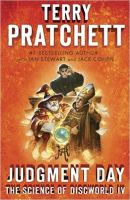
Author: XYuriTT
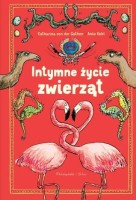 Title: Do Animals Fall in Love?
Title: Do Animals Fall in Love?